
"Let It Be" is a song by the English rock band the Beatles, released on 6 March 1970 as a single, and as the title track of their album Let It Be. It was written and sung by Paul McCartney, and credited to the Lennon–McCartney partnership. The single version of the song, produced by George Martin, features a softer guitar solo and the orchestral section mixed low, compared with the album version, produced by Phil Spector, featuring a more aggressive guitar solo and the orchestral sections mixed higher.
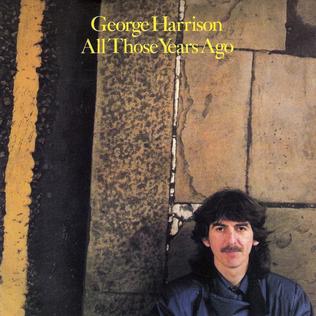
"All Those Years Ago" is a song by the English rock musician George Harrison, released in May 1981 as a single from his ninth studio album Somewhere in England. Having previously recorded the music for the song, Harrison tailored the lyrics to serve as a personal tribute to his former Beatles bandmate John Lennon, following the latter's murder in 1980. Ringo Starr is featured on drums, and Paul McCartney overdubbed backing vocals onto the basic track. The single spent three weeks at number 2 on the US Billboard Hot 100, behind "Bette Davis Eyes" by Kim Carnes, and it peaked at number 13 on the UK Singles Chart. It also topped Canada's RPM singles chart and spent one week at number 1 on Billboard's Adult Contemporary listings.

"When We Was Fab" is a song by English musician George Harrison, which he released on his 1987 album Cloud Nine. It was also issued as the second single from the album, in January 1988. The lyrics serve as a nostalgic reflection by Harrison on the days of Beatlemania during the 1960s, when the Beatles were first referred to as "the Fab Four". Harrison co-wrote the song with Jeff Lynne, who also co-produced the track. The recording references the psychedelic sound that the Beatles had helped popularise in 1967, through its use of sitar, cello, and backwards-relayed effects. Harrison's former Beatles bandmate Ringo Starr is among the other musicians on the track. The single was accompanied by an innovative music video, directed by the partnership of Kevin Godley and Lol Creme. One of Harrison's most popular songs, "When We Was Fab" has appeared on the compilations Best of Dark Horse 1976–1989 (1989) and Let It Roll (2009).
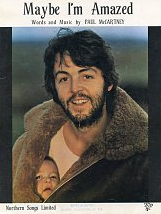
"Maybe I'm Amazed" is a song written by English musician Paul McCartney that was first released on his 1970 debut solo album McCartney.
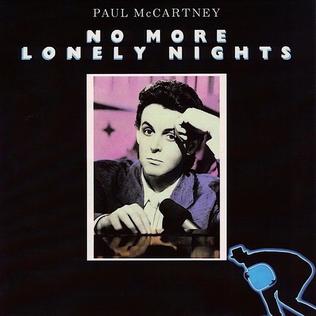
"No More Lonely Nights" is a song written and performed by Paul McCartney, first released on 24 September 1984 on the album Give My Regards to Broad Street
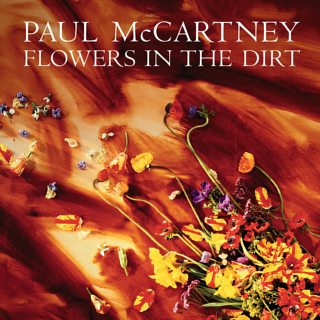
Flowers in the Dirt is the eighth solo studio album by Paul McCartney. The album was released on 5 June 1989 on Parlophone, as he was embarking on his first world tour since the Wings Over the World tour in 1975–76. It earned McCartney some of his best reviews for an album of original songs since Tug of War (1982). The album made number one in the United Kingdom and Norway and produced several hit singles. The album artwork was a collaboration between artist Brian Clarke, who painted the canvas and arranged the flowers, and Linda McCartney, who produced the cover photography.
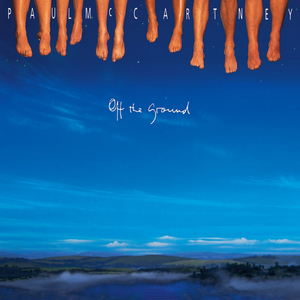
Off the Ground is the ninth solo studio album by Paul McCartney, released on 1 February 1993. As his first studio album of the 1990s, it is also the follow-up to the well received Flowers in the Dirt (1989).

"Got My Mind Set on You" is a song written and composed by Rudy Clark and originally recorded by James Ray in 1962, under the title "I've Got My Mind Set on You". An edited version of the song was released later in the year as a single on Dynamic Sound Records credited to Ray with Hutch Davie Orchestra & Chorus. The song features a variety of instruments, including a Chinese Lute, but it is unsure whether Ray or the orchestra played the lute.
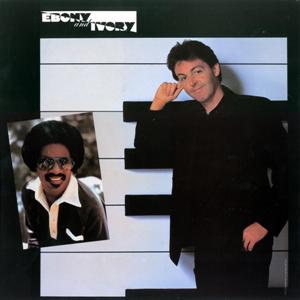
"Ebony and Ivory" is a song that was released in 1982 as a single by Paul McCartney featuring Stevie Wonder. It was issued on 29 March that year as the lead single from McCartney's third solo album, Tug of War (1982). Written by McCartney, the song aligns the black and white keys of a piano keyboard with the theme of racial harmony. The single reached number one on both the UK and the US charts and was among the top-selling singles of 1982 in the US. During the apartheid era, the South African Broadcasting Corporation banned the song after Wonder dedicated his 1984 Academy Award for Best Original Song to Nelson Mandela.

"Stars on 45" is a song medley issued in January 1981 by Dutch studio group Stars on 45. In some countries, including the UK, Ireland, and New Zealand, the band was credited as 'Starsound' and only the medley itself was named "Stars on 45".

"Mull of Kintyre" is a song by the British-American rock band Wings. It was written by Paul McCartney and Denny Laine in tribute to the Kintyre peninsula in Argyll and Bute in the south-west of Scotland and its headland, the Mull of Kintyre, where McCartney has owned High Park Farm since 1966.

"Band on the Run" is a song by the British–American rock band Paul McCartney and Wings, the title track to their 1973 album Band on the Run.

"I've Had Enough" is a song by the British–American rock band Wings, released as a single from their 1978 album London Town. It reached No. 25 on the Billboard Hot 100 chart, No. 24 in Canada and No. 42 in the UK as well as reached No. 11 in Ireland. In the Netherlands, the 2-sided single "I've Had Enough" combined with its B-side "Deliver Your Children" reached No. 13.
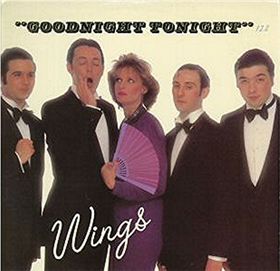
"Goodnight Tonight" is a song by the British–American rock band Wings. Written and produced by Paul McCartney, it was released as a non-album single on 23 March 1979 by Parlophone in the UK and Columbia Records in the US. It was recorded during the sessions for the band's 1979 album Back to the Egg and is notable for its disco-inflected sound and spirited flamenco guitar break.

"The World Tonight" is a song by Paul McCartney and is the second track on his 1997 album Flaming Pie. This song and Young Boy were featured in the 1997 movie Fathers' Day.
"From a Window" is a song written by Paul McCartney, attributed to John Lennon and Paul McCartney, which was recorded by Billy J. Kramer with The Dakotas. It was the last of six Lennon–McCartney compositions recorded by Kramer.
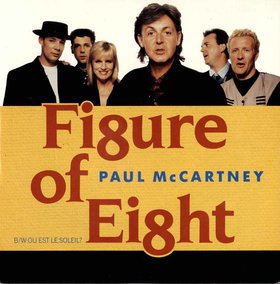
"Figure of Eight" is a song from Paul McCartney's 1989 album, Flowers in the Dirt.

"Put It There" is a 1990 single from Paul McCartney's 1989 album, Flowers in the Dirt. The song reached number 32 on the UK singles chart. The lyrics were inspired by an expression of friendship and solace that McCartney learned from his father, "Put it there [handshake] if it weighs a ton."

"Only One" is a song by American recording artist Kanye West, featuring English musician Paul McCartney. The song was released on December 31, 2014, and was the first song released by West after the release of his sixth studio album Yeezus.

The Costello Album, also The McCartney/MacManus Collaboration, is a Paul McCartney album that includes work from his 1987–88 songwriting collaboration with Elvis Costello. The album includes demo recordings made by Paul and Elvis in the throes of their collaboration, other demos of some songs by Costello and McCartney individually, live performances by Costello, and two duo live performances taken from a 1995 benefit concert at the Royal College of Music. A planned album credited to both was abandoned, initial work-ups appearing in the 2017 deluxe edition reissue to McCartney's Flowers in the Dirt. These recordings were unknown to the public until 1998 when they surfaced as an unofficial compact disc titled The McCartney/MacManus Collaboration.



















